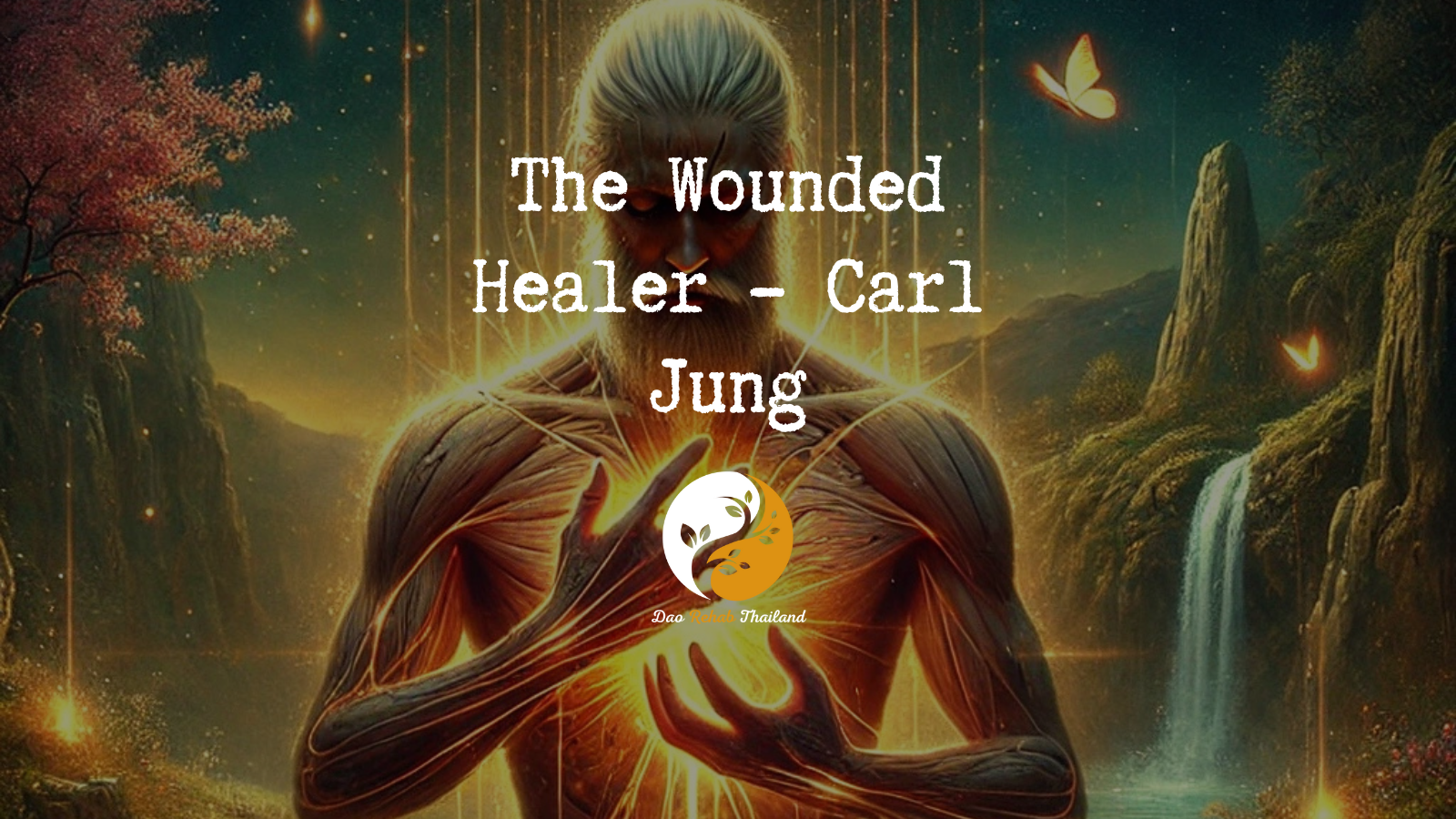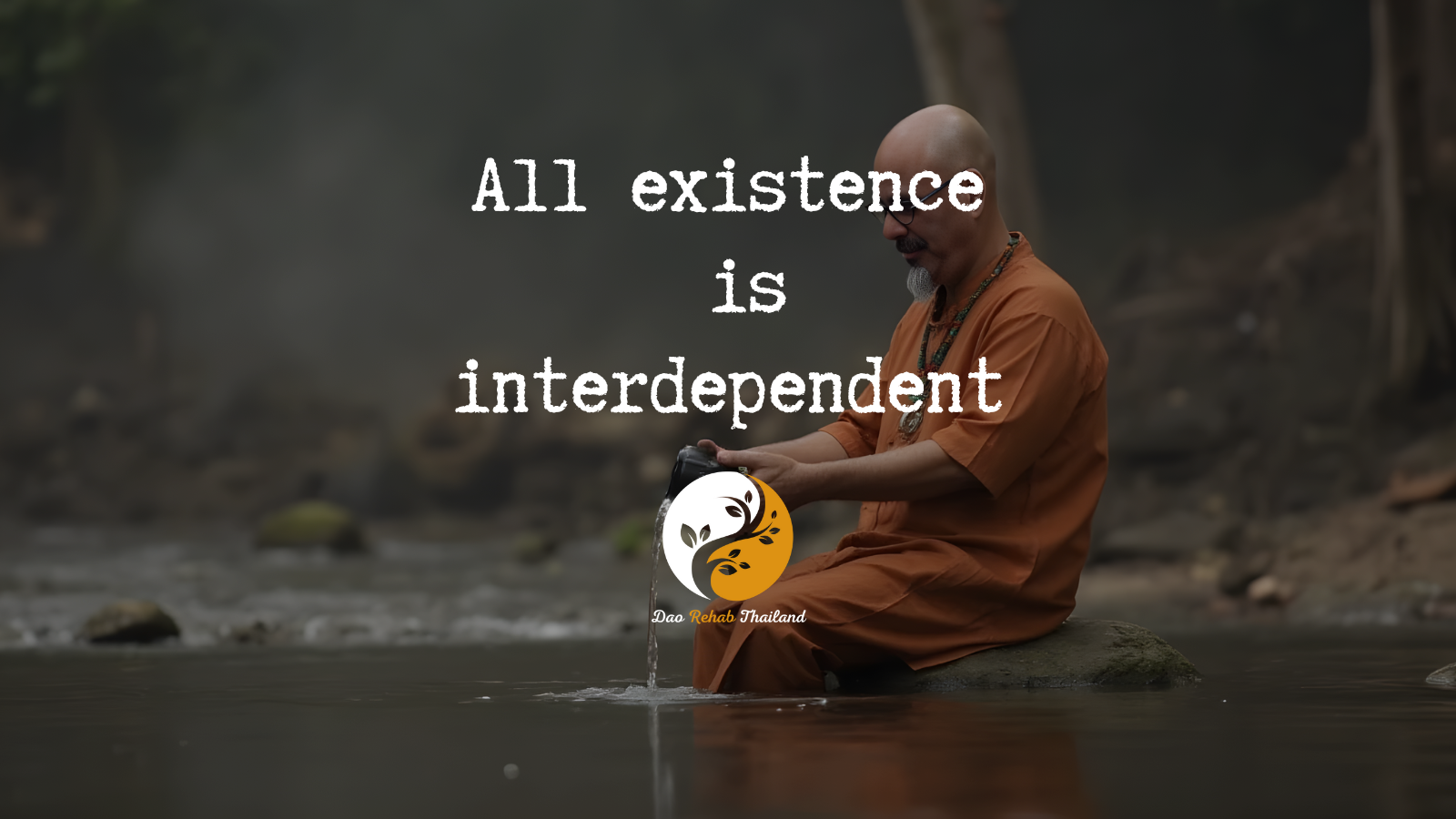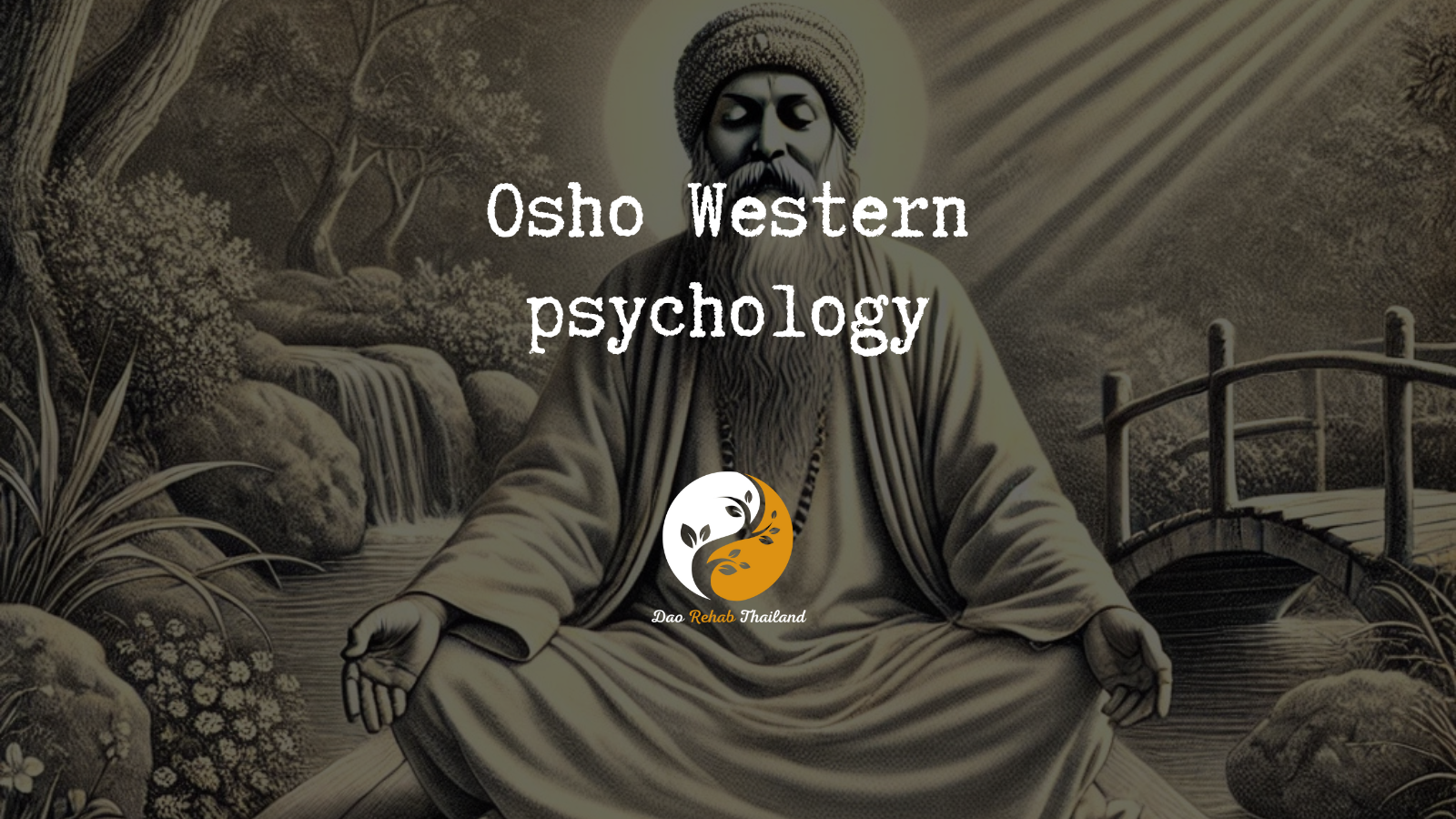
The Wounded Healer
The Wounded Healer
Carl Jung
“Turning the impossible into possible”

"Detox from Drugs at a Luxury Holistic Center in Thailand and Israel"

The Wounded Healer - Carl Jung
The psychology of the wounded healer is a central idea in the human concept of healing. To become a healer, one must first be wounded and overcome suffering. The wound becomes an archetype of the self and is at the basis of all true healing processes. Psychologist Carl Jung used the term “the wounded healer” to describe the process by which the healer finds light within the darkness of the wound.
"Holistic Center for Trauma, Addiction, and Mental Imbalance Treatment in Thailand"
“Come to the beginning of your journey to freedom from addiction to alcohol, drugs, and pills, and rediscover your life within the serene embrace of DaoTherapy Rehab in Thailand—where holistic healing meets empowering recovery.”
DaoTherapy Holistic Rehab
Key Elements of Drugs Detox:
Medical Supervision: Drugs detox must be conducted under medical supervision, as the body may experience withdrawal symptoms. These can include nausea, anxiety, muscle aches, and insomnia. A medical team will monitor and manage these symptoms to ensure the patient’s safety and comfort.
Holistic Therapies:
Holistic Therapies: Many detox programs incorporate holistic therapies such as mindfulness, yoga, and meditation to help individuals cope with stress and anxiety during the detox process. These therapies support the mind-body connection and contribute to overall recovery.
Tapering Process
Tapering Process: Drugs detox often involves a gradual tapering of the drug to reduce withdrawal severity. Doctors will slowly decrease the dosage over time to allow the body to adjust to lower levels of the substance.
Psychological Support:
Psychological Support: Like any addiction recovery process, detox from Drugs includes psychological support. This can involve counseling, therapy, or support groups to address the mental and emotional aspects of addiction.
Post-Detox Treatment:
Post-Detox Treatment: After completing detox, continuing treatment is crucial to prevent relapse. This often includes participation in ongoing therapy, group support, and the development of new coping strategies to maintain sobriety.
The therapist should be aware of his wounds.
The stories of Chiron, Asclepius, Jacob, and Jesus illustrate the idea of the wounded healer. Chiron, the wise centaur, became a skilled healer but was wounded by a poisoned arrow and was unable to heal himself. He suffered pain for the rest of his life, but sacrificed himself for Prometheus and earned a place among the stars. Asclepius, the Greek god of medicine, was born from a wound in his dead mother and became such a skilled healer that he brought the dead back to life. He is the only god to have experienced death, which made him loved and revered. In his healing temples, snakes symbolizing wisdom and healing roamed freely.
The philosophers Nietzsche and Jung saw death as an integral part of life. One must learn to live and die well, with acceptance and understanding. Suffering and injury constitute a “call to adventure” that begins the hero’s journey and leads to the development of the soul. In the process of injury, the person is forced to confront his dark and broken side, but through this coping he reaches his true and complete self.
Modern psychotherapy is based on these ideas. The therapist must be aware of his wounds and use them to identify with the patient’s suffering. He must be careful not to project his wounds onto the vulnerable patient. At the same time, the patient often projects the image of the healer onto the therapist, but ultimately must understand that the potential for healing lies within him.
The therapeutic process is a shared journey of dealing with the wounds and turning them into a source of growth and wisdom. Every crisis is an opportunity for development and to transcend personal suffering. By connecting with the wounded and broken parts, and by accepting death as part of life, true wholeness and healing can be achieved.
The healing process requires courage, honesty, and a willingness to look inward. It requires the ability to contain contrasts and contradictions, and to see light and darkness as complementary parts of the whole. It is both a personal and universal process, reflecting the journey of all humanity towards development and growth.
Ultimately, the wound and the healing are two sides of the same coin. They are an integral part of the human experience, allowing us to connect with ourselves, others and the world. Through dealing with difficulties and pain, we discover our inner strengths and our ability to rise above suffering. Thus, the wound becomes a source of wisdom, compassion and a deeper understanding of the essence of life.

contact us
Contact us with your questions
We would love to speak with you! Feel free to reach out with any questions.

get in touch
Schedule a free consultation
Schedule a free consultation with our team and let’s make things happen!
The central role of the wound in the healing process
The psychology of the wounded healer is a central idea in the human healing concept. It emphasizes the importance of experiencing the wound and suffering on the way to becoming a true healer. In order to be able to help others in the healing process, the healer must himself experience the pain and difficulty of the wound. Only through personal coping and self-awareness can the healer develop the compassion, understanding, and wisdom needed to guide others on their healing journey.
The Wound as an Archetype of the Self
The psychologist Carl Jung saw the wound as an archetype of the self, representing the potential inherent in every person to develop and reach perfection. The wound is not just an obstacle or difficulty, but an opportunity for growth and to transcend personal limitations. Through coping with pain and suffering, we discover our inner strengths and our ability to overcome challenges. Thus, the wound becomes a source of insight, mental resilience, and compassion for ourselves and others.
The Secret of Healing Within the Wound
The understanding that the secret of healing lies within the wound itself is a central insight in the psychology of the wounded healer. The wound is not just a symptom or a disorder to be rid of, but a key to a deeper understanding of the human psyche. Through investigation and observation of the wound, it is possible to discover the reasons, patterns and beliefs that led to its formation. From this awareness, it is possible to develop a new approach to life, based on acceptance, integration and growth.
Chiron: The Mythological Wounded Healer
The mythological story of Chiron, the centaur who became a great teacher and healer, illustrates the idea of the wounded healer. Chiron himself was wounded by a poisoned arrow that could not heal, and suffered from constant pain. However, his suffering gave him a deep understanding of the nature of human pain and a unique ability to empathize with the suffering of others. Through his wound, Chiron became a skilled and empathetic healer, guiding his disciples on their path to healing and growth.
Asclepius: The Wounded God of Medicine
Asclepius, the Greek god of medicine, also represents the close connection between injury and healing. Asclepius himself was born from a wound, when Apollo saved him from the death of his mother. He became such a skilled healer that he dared to bring the dead back to life. The fact that Asclepius experienced both injury and healing gives him a unique status as the god of medicine. In the healing temples dedicated to him, snakes, symbolizing renewal and wisdom, roamed freely. Believers turned to him in prayer and dreams, believing that through contact with the wounded god, they could find a cure for their pain.
The importance of awareness of personal wounds in the healing journey
Awareness of personal wounds is a key point in the development process of every person, and especially of therapists and healers. A therapist who is unaware of his own wounds may unconsciously project them onto patients, and interfere with the therapeutic process. On the other hand, a therapist who recognizes and accepts the wounded sides within him can use them as an empathetic and effective tool in therapeutic work. Through personal observation and self-work, the therapist develops the ability to contain the patient’s suffering, without losing boundaries and mental balance.
Therapeutic dialogue as an encounter between wounded
The therapeutic process constitutes a unique space for an encounter between two wounded people – the therapist and the patient. Both carry with them a history of pain, loss and heartbreak, and both are looking for ways to grow, recover and have meaning. Therapeutic dialogue allows the wounds of both participants to meet, be exposed and heal. Through the intimate and precise interaction, the possibility of new insights, changing patterns of thinking and behavior, and developing new emotional tools is created.
The Common and Universal in the Experience of Human Wounding
Although each person experiences wounding and suffering in a unique and personal way, there are universal characteristics to the human experience of pain. Ultimately, we all share the same existential questions, fears, and longings. Recognizing that suffering is an inseparable part of existence may awaken in us self-compassion and acceptance of our fragile humanity. From this, we can develop an attitude of sympathy, tolerance, and inclusion toward ourselves and those around us.
Healing as a Process of Transformation and Growth
In the psychology of the wounded healer, healing is seen as a dynamic and ongoing process, not limited to the disappearance of symptoms or the solution of the immediate problem. True healing involves a profound transformation of the soul, a conscious and emotional change that allows for development and expansion. It is a process that requires courage, patience, and a willingness to face challenges and obstacles. However, the fruits of the healing journey are a sense of wholeness, peace, and deeper meaning.
Death and Rebirth: Death as a Gateway to Life
The motif of death and rebirth recurs again and again in the stories of wounded healers. Chiron volunteers to end his eternal life and face the human fate of death. Asclepius himself experienced death and resurrection. In the process of spiritual healing, too, there is often a sense of the death of the old self, and the rebirth of a more comprehensive self. Death, like the wound, becomes a gateway to a new life, an opportunity for growth and development.
The Relevance of the Wounded Healer Idea in the Modern World
In modern Western culture, which encourages the pursuit of perfection, performance, and achievement, it is easy to lose touch with the wounded and human dimension of life. However, precisely in a time of challenges, change, and uncertainty, the wounded healer’s approach offers a healthier and more beneficial way to cope. By listening to wounds, accepting imperfection, and embracing suffering, we can cultivate resilience, compassion, and self-awareness. In this way, we can live more authentic and meaningful lives, and contribute to self- and collective healing.
Central insights
1. To become a healer, one must first be wounded and overcome suffering.
2. Our wound is the archetype of the self and is at the basis of all true healing processes.
3. The secret to healing lies within the wound, which contains the medicine.
4. Asclepius is the only god who experienced death, which makes him one of the most beloved and revered gods of the Greeks.
5. The snake was seen as a symbol of wisdom, healing, and resurrection, and was free in healing temples.
6. Socrates thanks Asclepius for curing the “disease of life” with the “medicine of death.”
7. Death is not the opposite of life, but an inseparable part of it. One must learn to live and die correctly.
8. The wound is a “call to adventure” that begins the hero’s journey and leads to the development of the soul.
9. The shaman is a sick person who has managed to heal himself, and becomes a healer in the community.
10. The therapist and the patient heal each other. The potential for healing lies within the person themselves.
practical advice:
1. Accept your wounds and turn them into a source of healing.
2. Face your inner dragon to reach your true self.
3. Learn to live and die correctly, accepting and understanding death as a part of life.
4. Seek the meaning of your suffering, because in doing so you seek the meaning of your life.
5. Remember that the ultimate source of healing is within you.
6. Be aware that every crisis is an opportunity for development and growth.
Psychological Support:
Psychological Support: Like any addiction recovery process, detox from Subutex includes psychological support. This can involve counseling, therapy, or support groups to address the mental and emotional aspects of addiction.
self-talk mantras:
1. Instead of “I am wounded and broken” – I accept my wounds as an opportunity for growth and healing.
2. Instead of “I am unable to cope” – I have the strength to face any challenge.
3. Instead of “I am stuck” – I am on the path to finding my true self.
4. Instead of “I am afraid of death” – I am learning to live and die rightly, with acceptance.
5. Instead of “I am alone in this” – I am part of a universal human experience of suffering and healing.
Thought provoking questions:
1. How can you connect with your personal wounds and make them a source of healing for yourself and others?
2. How do you deal with the fear of death, and how can you learn to accept it as a part of life?
3. In what ways can you incorporate the insights from the lesson into your daily life?
4. How have your experiences of injury and suffering influenced your personal development and your worldview?
5. In what ways can you support the healing process of others, using your personal wounds?








